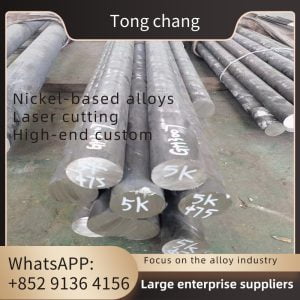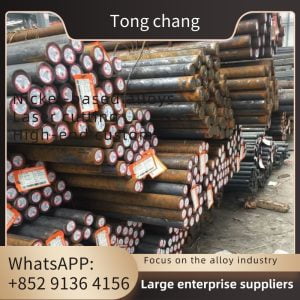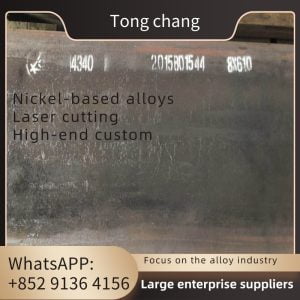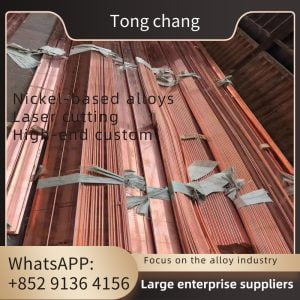| Product Name: | Copper Alloy Low Finned Tube | Standard: | ASTM B111, ASME SB111 |
|---|---|---|---|
| Tube Material: | C70600 / C71500 / C12200 / C12100 / C68700 / C44300 | Main Tube Size: | OD: 15.88-63.5mm , Thk.1.65-4.57mm |
| Tube W.T.: | 1.65-4.57 | Length: | Depend On Client Request |
| End: | Plain End, Beveled End | Application: | Oil Cooler, Pre Heater, Radiator, Air Conditioner Evaporator And Condenser, Steam System |
| High Light: | ASTM B111 C70600 Low Finned Tube, CUNI 90/10 Low Finned Tube, Copper Nickel Alloy Low Finned Tube | ||
ASTM B111 C70600 CUNI 90/10 Copper Nickel Alloy Low Finned Tube For Radiador
The structure parameters are mainly the inner diameter and outer diameter of the fin tube, the wall thickness of the fin tube, the pitch of the fin tube, the thickness of the fin tube and the height of the fin tube.
The low-finned tube mainly relies on the outside of the tube finning (the finning coefficient is 2~3) to expand the heat transfer area, and has a larger surface area compared with the light tube when consuming the same metal material. Intuitively, it is the first time to enhance heat transfer, but in fact, the increase of heat transfer area brings about the increase of heat transfer coefficient. Fin can make the heat transfer surface peel the flow layer, increase the heat transfer surface disturbance and improve the heat transfer effect, and strengthen the heat transfer twice. The main factors affecting heat transfer of finned surface are fin height, fin thickness, fin spacing and thermal conductivity of fin material. In addition, because one side of the heat transfer wall is extended into the fin surface, the convective heat transfer of the smooth side and the heat conduction of the base wall have certain effects on the total heat transfer. The size of the fin spacing of the low fin tube needs to be determined according to the surface tension of the liquid and the shear force on the liquid film generated by the flow.
The practical application proves that the low-fin tube also has excellent anti-fouling performance, because the dirt often forms parallel scale sheets along the edge of the wave crest, and the tube will expand and contract with the temperature change during operation, and this "accordion" type expansion and contraction effect will prevent the formation of dirt. On the plain tube, the dirt will form a layer of cylinders on the tube wall, and there is no natural mechanism to prevent the dirt from being produced. Because of the low fin, the cleaning method and difficulty of the low fin tube are exactly the same as that of the light tube. In addition, the low-fin tube is made of ordinary plain tube as blank, which is made by simple rolling processing, and its mechanical strength and corrosion resistance are no less than the original plain tube blank, which can ensure the long-term reliable work of the heat exchanger.
Chemical Composition max %
| Grade | Cu | Ni | Pb | Fe | Zn | Mn |
| C70600 | remainder | 9-11 | 0.05 | 1-1.8 | 1 | 1 |
Mechanical Properties
| Grade | Formar | Tensile Strength,min | Yield Strength (0.2%Offset,min) |
| C70600 O61 | annealed | ksi-40 | psi-15 |
Petrochemical industry
C70600 copper-nickel alloy pipe fittings are widely used in the petrochemical industry. Because the alloy has good corrosion resistance and high temperature properties, it is often used in the manufacture of pipelines, valves, seals and other key components in petrochemical equipment. The use of C70600 copper-nickel fittings can significantly improve the reliability and safety of the equipment and reduce the probability of accidents.
Second, the field of ocean engineering
In the field of Marine engineering, C70600 copper-nickel alloy pipe fittings also have a wide range of applications. Due to the serious corrosion in the Marine environment, the use of C70600 copper-nickel alloy pipe fittings can effectively improve the corrosion resistance and service life of the equipment. At the same time, the high electrical conductivity of the alloy can also ensure the good operation and safety of the equipment.
Energy sector
In the energy field, C70600 Cu-Ni alloy pipe fittings are also widely used in electric power, nuclear energy, solar energy and other fields. In the power sector, C70600 copper-nickel fittings are often used to manufacture key components such as transformers and cables. In the nuclear sector, the alloy is often used to make critical components such as pipes and valves in nuclear reactors; In the solar sector, C70600 copper-nickel fittings can be used to manufacture components such as connecting pipes in solar panels.
Environmental protection
With the continuous improvement of environmental awareness, C70600 copper-nickel alloy pipe fittings are increasingly widely used in the field of environmental protection. For example, in environmental protection projects such as sewage treatment and seawater desalination, the alloy is often used to manufacture key components such as pipes and valves. Because the C70600 copper-nickel alloy pipe has good corrosion resistance and high electrical conductivity, it can improve the service life and reliability of the equipment, and also ensure the normal operation and safety of the project.
Construction field
In the construction field, C70600 copper-nickel alloy pipe fittings also have a wide range of applications. For example, in building heating systems, the alloy is often used to make key components such as radiators and hot water pipes. Because the C70600 copper-nickel alloy pipe has good corrosion resistance and high thermal conductivity, it can improve the reliability and service life of the heating system, and also has good aesthetic and energy saving effects.




